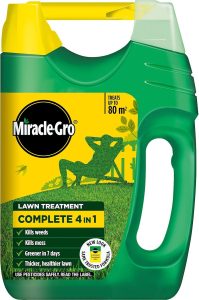As the blossoms of spring give way to the sweet fruits of summer, one key ingredient to a bountiful harvest is proper pruning. Whether you’re a novice gardener eager to try your hand at fruit tree maintenance or a seasoned pro looking to brush up on the basics, this beginner’s guide to pruning fruit trees will equip you with the knowledge and skills needed to cultivate healthy, productive trees that will bear fruits for years to come. Join us as we delve into the art of pruning and unlock the secrets to shaping your orchard into a thriving oasis of delicious delights.
Benefits of Pruning Fruit Trees
Pruning fruit trees may seem daunting at first, but the benefits make it well worth the effort. By regularly pruning your fruit trees, you can help them stay healthy and productive for years to come. One of the main benefits of pruning is that it promotes new growth and increases fruit production. This is because pruning encourages the tree to focus its energy on producing fruit rather than wasting it on unnecessary branches.
Additionally, pruning helps improve the overall health of the tree by allowing for better air circulation and sunlight exposure. This can reduce the risk of disease and pests, ultimately leading to a higher quality yield. Another advantage of pruning is that it helps shape the tree, making it easier to harvest the fruit when the time comes. With proper pruning techniques, you can ensure that your fruit trees not only look great but also provide a bountiful harvest.
Key Techniques for Proper Pruning
When it comes to pruning fruit trees, there are a few key techniques to keep in mind to ensure the health and productivity of your trees. One important technique is thinning, which involves removing excess branches and foliage to allow for better air circulation and sunlight penetration. This not only helps prevent disease but also promotes fruit development. Another essential technique is heading back, where you cut back the tips of branches to encourage new growth and maintain a balanced tree structure. Proper heading back can help control the size of the tree and stimulate fruit production.
Additionally, directional pruning is crucial for shaping the tree and guiding its growth in the desired direction. By cutting back branches that are growing in the wrong direction, you can help the tree develop a strong framework and improve fruit quality. It’s also important to remember to prune at the right time of year, typically during the dormant season, to minimize stress on the tree and maximize the benefits of pruning. By mastering these key techniques, you can effectively prune your fruit trees for optimal health and yield.
Best Time to Prune Fruit Trees
When to Prune Fruit Trees
Pruning fruit trees is essential for maintaining their health and productivity. The is during the dormant season, which is typically late winter to early spring. Pruning during this time allows the tree to focus its energy on new growth and fruit production once the growing season begins. It also reduces the risk of disease transmission and minimizes stress on the tree.
It’s important to consider the specific type of fruit tree you have when determining the best time to prune. Some fruit trees, such as apple and pear trees, benefit from winter pruning to shape their canopy and encourage fruiting spurs. On the other hand, peach and cherry trees are best pruned after they have finished fruiting in late summer to early fall. Remember to always use sharp, clean tools when pruning and remove any dead or diseased branches to promote overall tree health.
Common Mistakes to Avoid
When pruning fruit trees, it is essential to avoid some common mistakes that can harm your tree’s health and productivity. One common mistake is to prune too much or too little. Over-pruning can weaken the tree, making it more susceptible to diseases and pests, while under-pruning can lead to overcrowding and decreased fruit production.
Another mistake to avoid is not considering the timing of your pruning. Pruning at the wrong time of year can stress the tree and reduce fruit production. It is important to research the specific needs of your fruit tree species and prune accordingly. Remember, proper pruning techniques can help improve the overall health and abundance of your fruit trees.
Concluding Remarks
As you embark on your journey to master the art of pruning fruit trees, remember that practice makes perfect. With patience and careful attention to detail, you’ll soon be proficient in shaping your trees for optimal health and fruit production. So grab your pruning shears and get ready to sculpt your orchard into a thing of beauty. Happy pruning!




